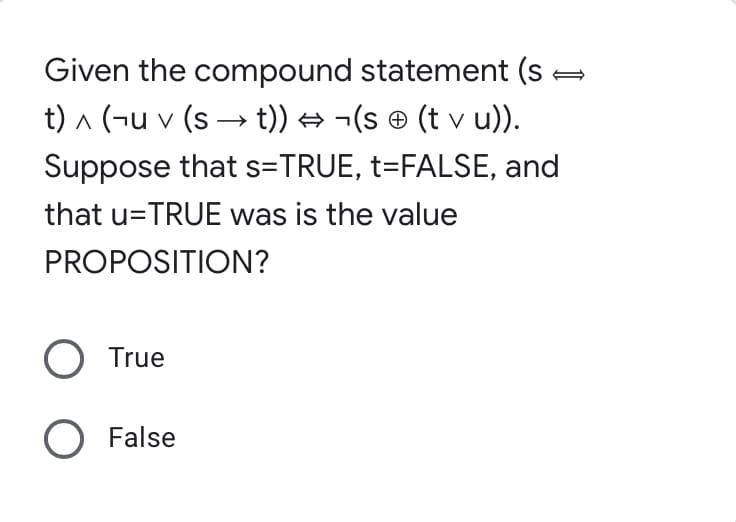Given the compound statement (s . t) ^ (¬u v (s → t)) → ¬(s ® (t v u)). V V Suppose that s=TRUE, t=FALSE, and that u=TRUE was is the value PROPOSITION? True O False
Given the compound statement (s . t) ^ (¬u v (s → t)) → ¬(s ® (t v u)). V V Suppose that s=TRUE, t=FALSE, and that u=TRUE was is the value PROPOSITION? True O False
Elements Of Modern Algebra
8th Edition
ISBN:9781285463230
Author:Gilbert, Linda, Jimmie
Publisher:Gilbert, Linda, Jimmie
Chapter5: Rings, Integral Domains, And Fields
Section5.3: The Field Of Quotients Of An Integral Domain
Problem 6E
Related questions
Question
Thankyou!

Transcribed Image Text:Given the compound statement (s
t) a (¬u v (s → t)) → ¬(s © (t v u)).
Suppose that s=TRUE, t=FALSE, and
that u=TRUE was is the value
PROPOSITION?
O True
O False
Expert Solution
This question has been solved!
Explore an expertly crafted, step-by-step solution for a thorough understanding of key concepts.
Step by step
Solved in 2 steps with 1 images

Recommended textbooks for you

Elements Of Modern Algebra
Algebra
ISBN:
9781285463230
Author:
Gilbert, Linda, Jimmie
Publisher:
Cengage Learning,

Elements Of Modern Algebra
Algebra
ISBN:
9781285463230
Author:
Gilbert, Linda, Jimmie
Publisher:
Cengage Learning,